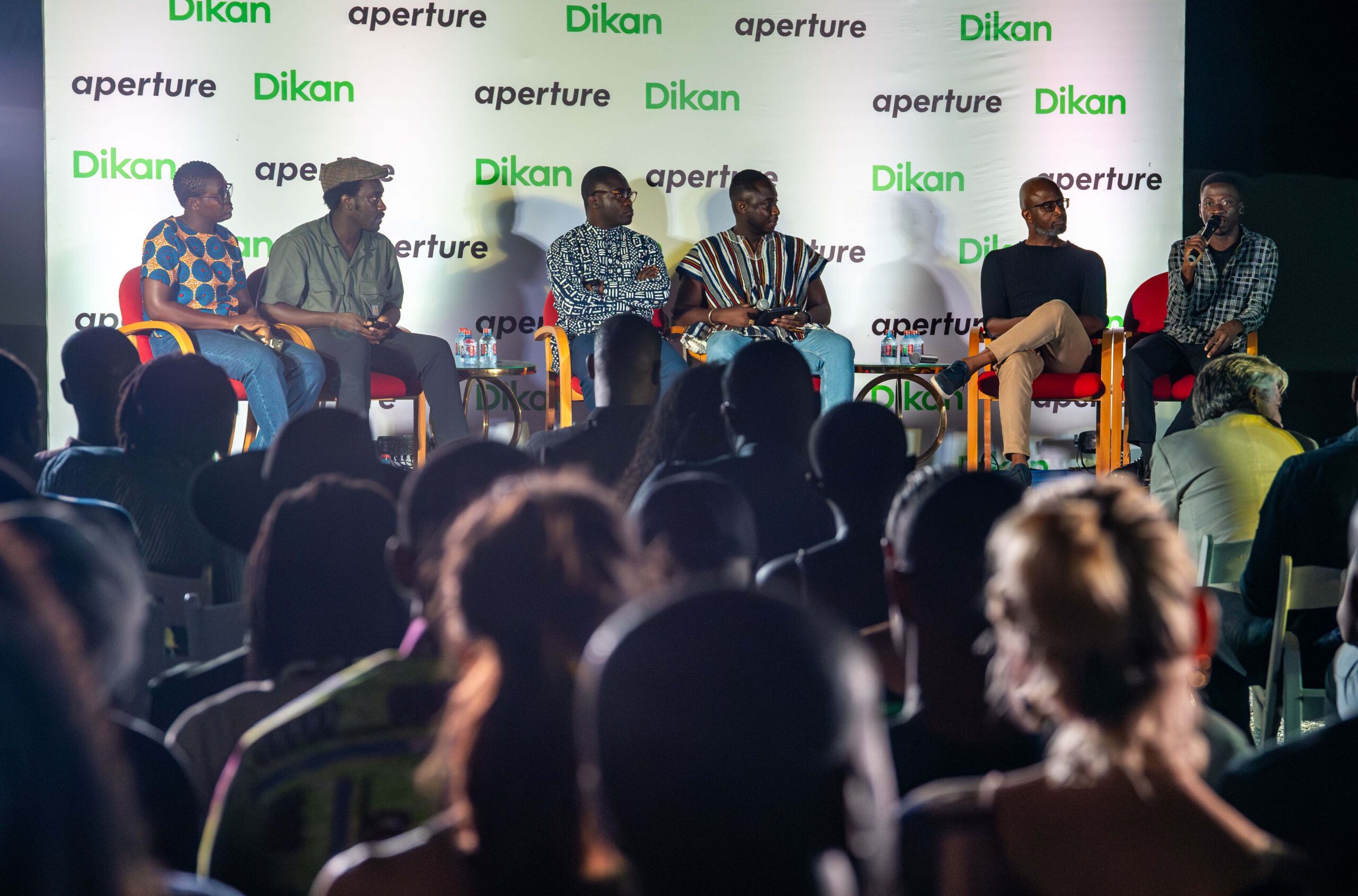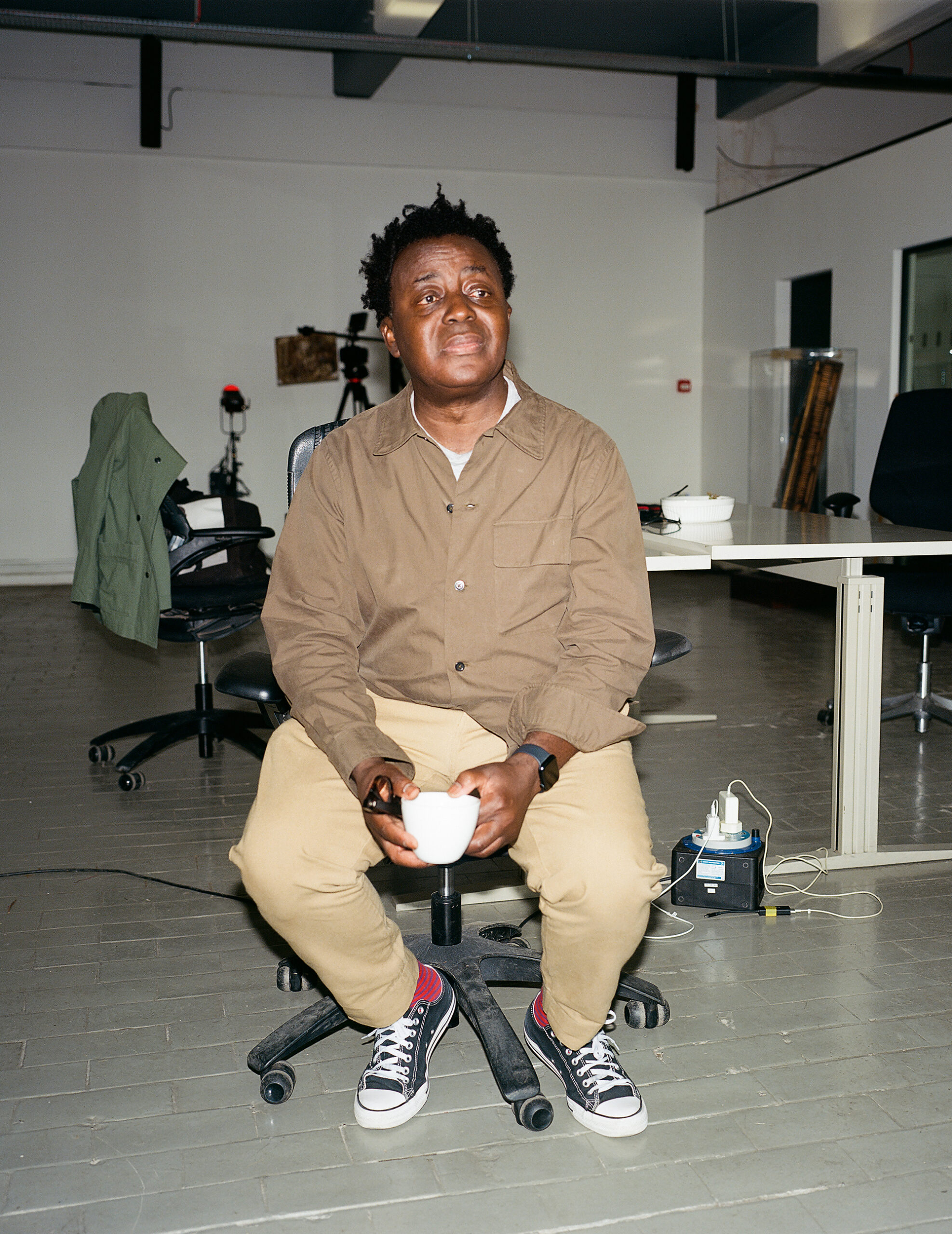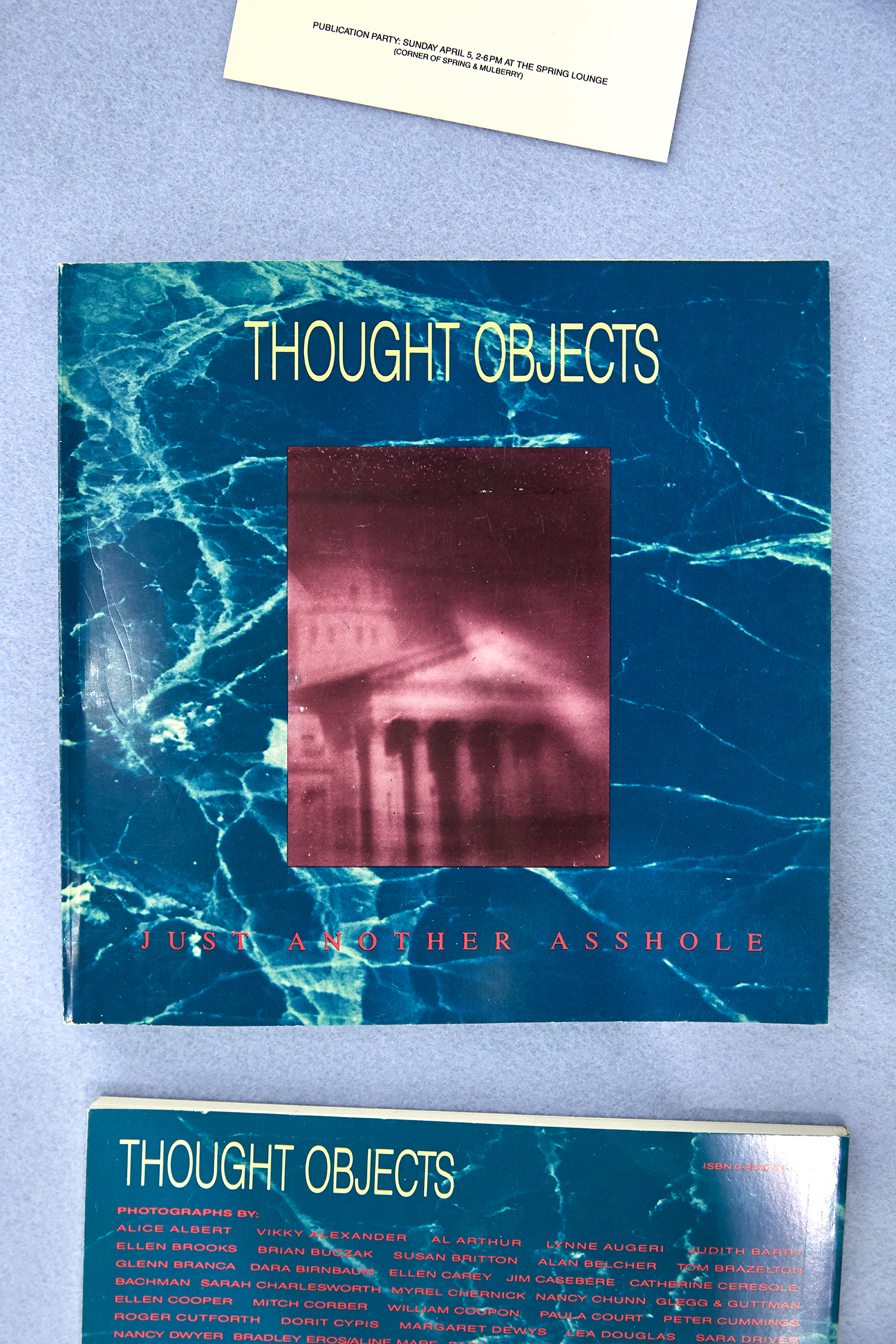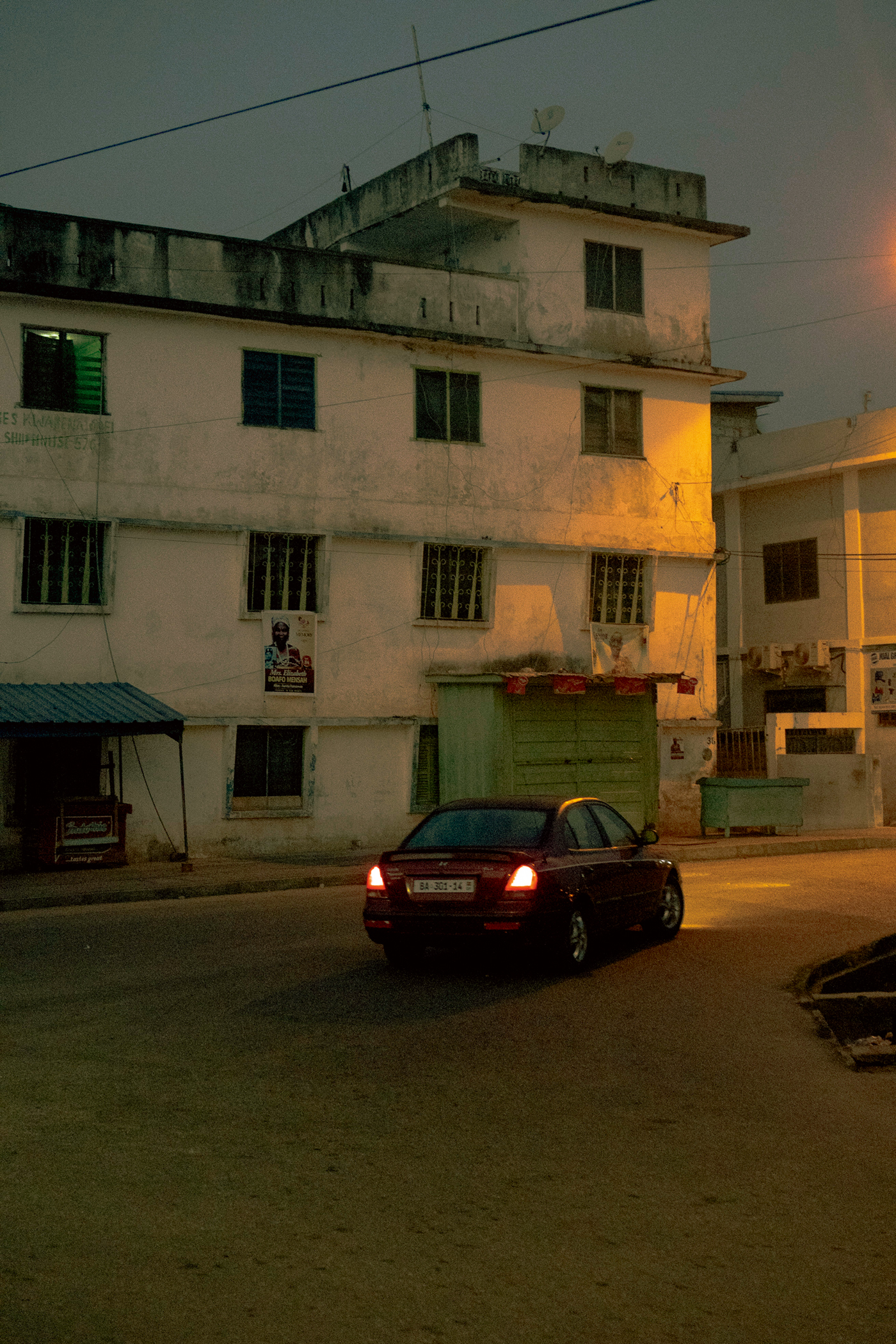Essays
How Archives Illuminate the History and Culture of Ghana
From photographs to record covers, Ghana’s archives have become invaluable resources for understanding the nation’s past.
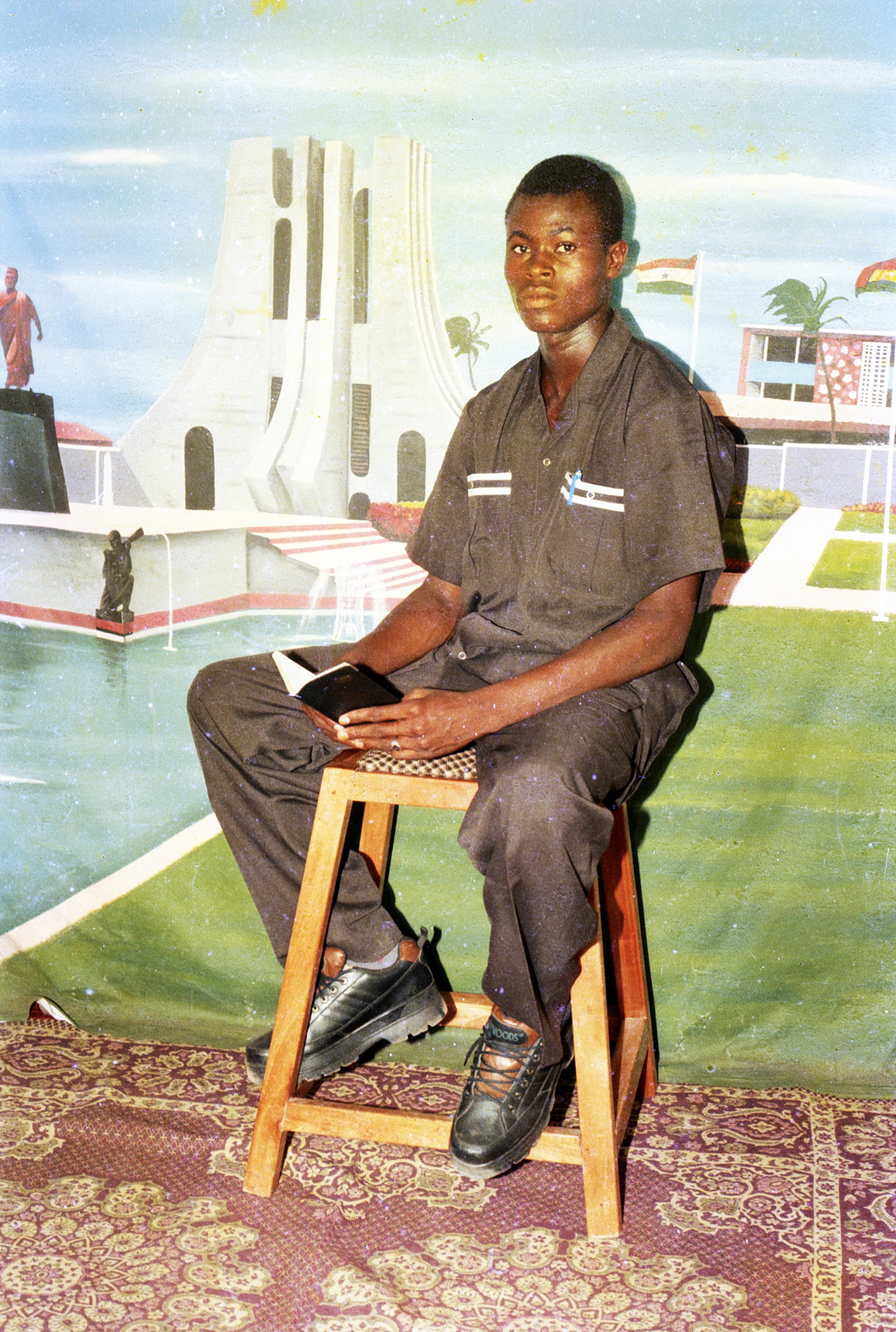
© and courtesy the artist and Saman Archive
The first time I heard of a photographic archive in Ghana was in 2009 after returning to Accra following studies in London. I was the editor of Dust, a quarterly love letter to Accra that documented the city’s (then) nascent cultural scene. We were drafting an article about one of our inspirations—the iconic South African magazine Drum (which published photography by the likes of Ernest Cole and James Barnor in the 1950s and 1960s)—when my photo-editor, Seton Nicholas, mentioned the Willis Bell Archive.
Bell, an American photographer who died in 1999, snapped thousands of images during a long residence in postindependence Ghana, including commissioned photographs of Ghana’s first leader, Kwame Nkrumah. Those photographs are currently being restored and digitized by the Mmofra Foundation, a nonprofit organization continuing the work of Bell’s close friend Efua Sutherland, a playwright who was one of Ghana’s first and most prominent cultural activists and advocates for children. Mmofra (which means “children” in Akan) runs a beautiful park on the Sutherland compound, where Bell once lived, and is dedicated to the cultural and intellectual enrichment of Ghana’s children.

Photograph by Francis Kokoroko for Aperture
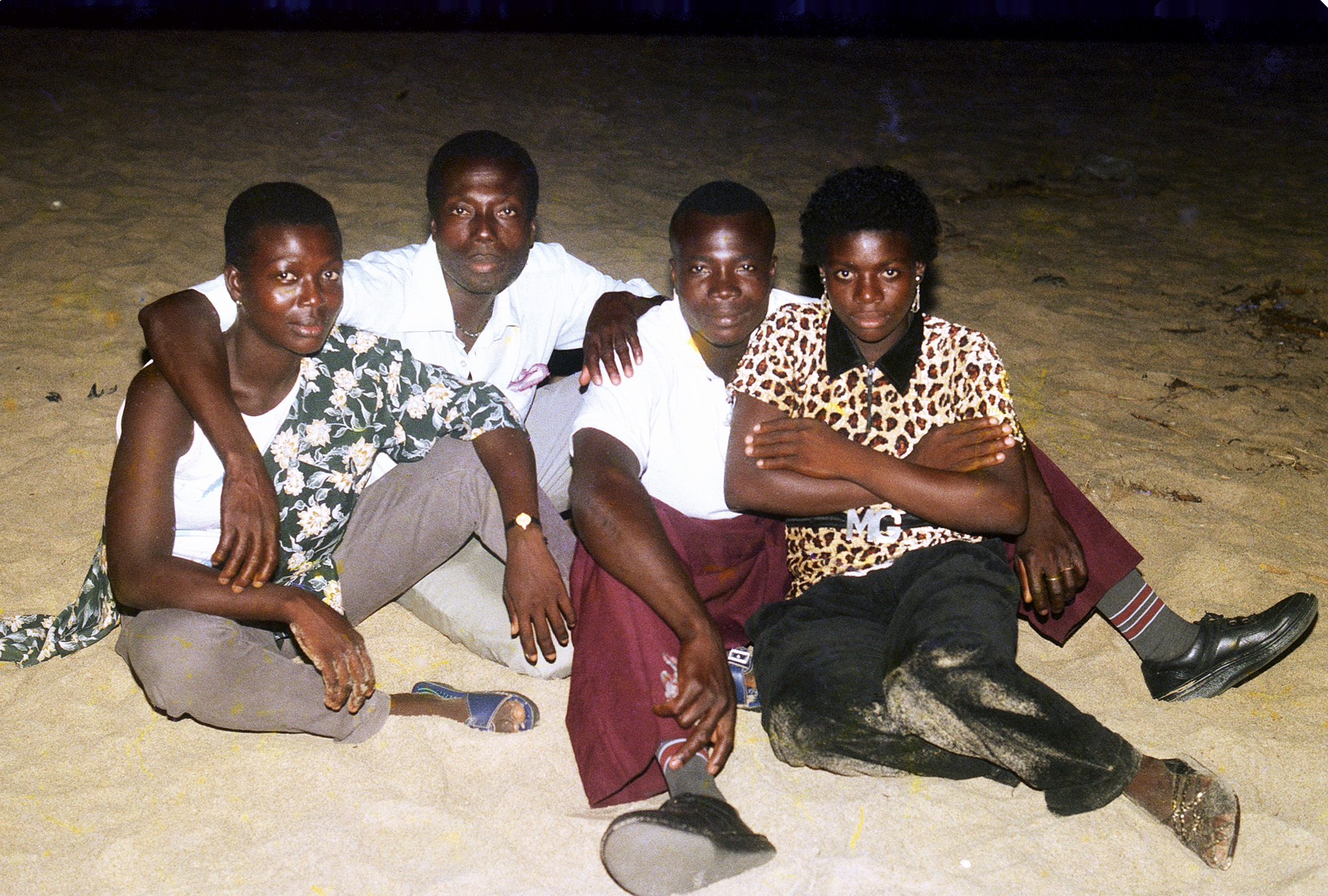
© and courtesy the artist and Saman Archive
There are, of course, other archives in a land as visually compelling as Ghana. Photographs were once a marker of social status here, and many elite Ghanaian families have flocked to places such as Accra’s Deo Gratias, one of Ghana’s oldest photographic studios, to immortalize themselves. Deo Gratias (Latin for “thanks to God”) was founded by the photographer J. K. Bruce-Vanderpuije in 1922. Born to a wealthy family in 1899, he opened the studio after a three-year apprenticeship under the photographer J. A. C. Holm. The firm made portraits of British and Indian families as well as Black professionals, then expanded to cover corporate events. Bruce-Vanderpuije was later joined by one of his sons, Isaac, also a gifted photographer. Deo Gratias, situated in a graceful old building in the heart of Jamestown, one of the city’s first districts, is surrounded by history: it is walking distance from a lighthouse, two colonial-era forts, and a palace. It is run today by Kate Tamakloe, who builds on her father’s and grandfather’s work by scanning and digitizing pictures from old film and glass plates.
Tamakloe considers archives such as Deo Gratias to be vitally important in Africa, where history is often ignored, forgotten, or obscured. The introduction of photography in West Africa in the mid-nineteenth century would ultimately give Ghanaians a better appreciation of the landmark events of independence a hundred years later. The photographs housed at Deo Gratias “prove history, occasion, and even lifestyle,” she says, and, in turn, inspire books, films, and documentaries. One might think that this would make the archiving of photography a national priority, but Tamakloe explains that individual Ghanaians have always been more supportive of photography than any of Ghana’s myriad political administrations.
Aperture Magazine Subscription
0.00
That said, one of Ghana’s most important repositories, the J. H. Kwabena Nketia Archives, part of the University of Ghana, benefits, at least indirectly, from government support. Currently run by Judith Opoku-Boateng, the archive is named after Joseph Hanson Nketia, Africa’s foremost ethnomusicologist until his passing in 2019, at the age of ninety-seven. Its contents include music from all over Africa—priceless recordings of vanishing traditions—as well as the Institute of African Studies’ historical records dating as far back as the 1960s, and a large photographic collection of postcolonial Ghana. It is the largest and most systematic set of recordings of any African ethnomusicologist, initially spanning forty years of field research by Nketia and his colleagues, and documents sounds, stories, and songs across the length and breadth of Ghana, along with oral and performance traditions of the numerous peoples within (and sometimes beyond) its borders. Recent initiatives to grow the collection have included the gathering of special historical papers, photographs, and other audiovisual materials from the families of other deceased scholars. Nketia was the first to capture practices passed down for generations through oral tradition. While his association with music means that the archive may be known primarily for its traditional and highlife recordings, it also houses thousands of negatives and prints that capture the lives of Ghanaians of all walks of life at a crucial time in our history.
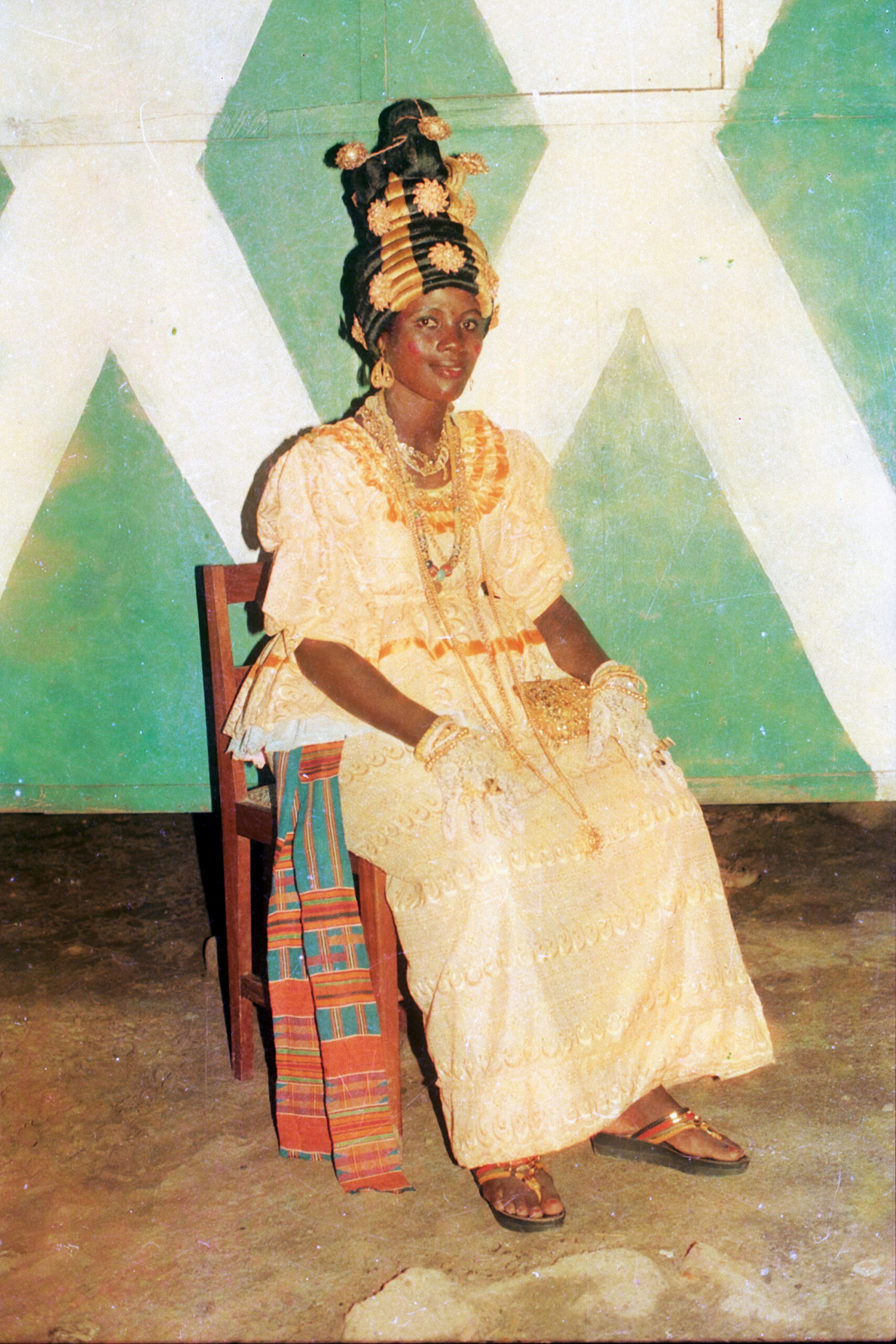
© and courtesy the artist and Saman Archive
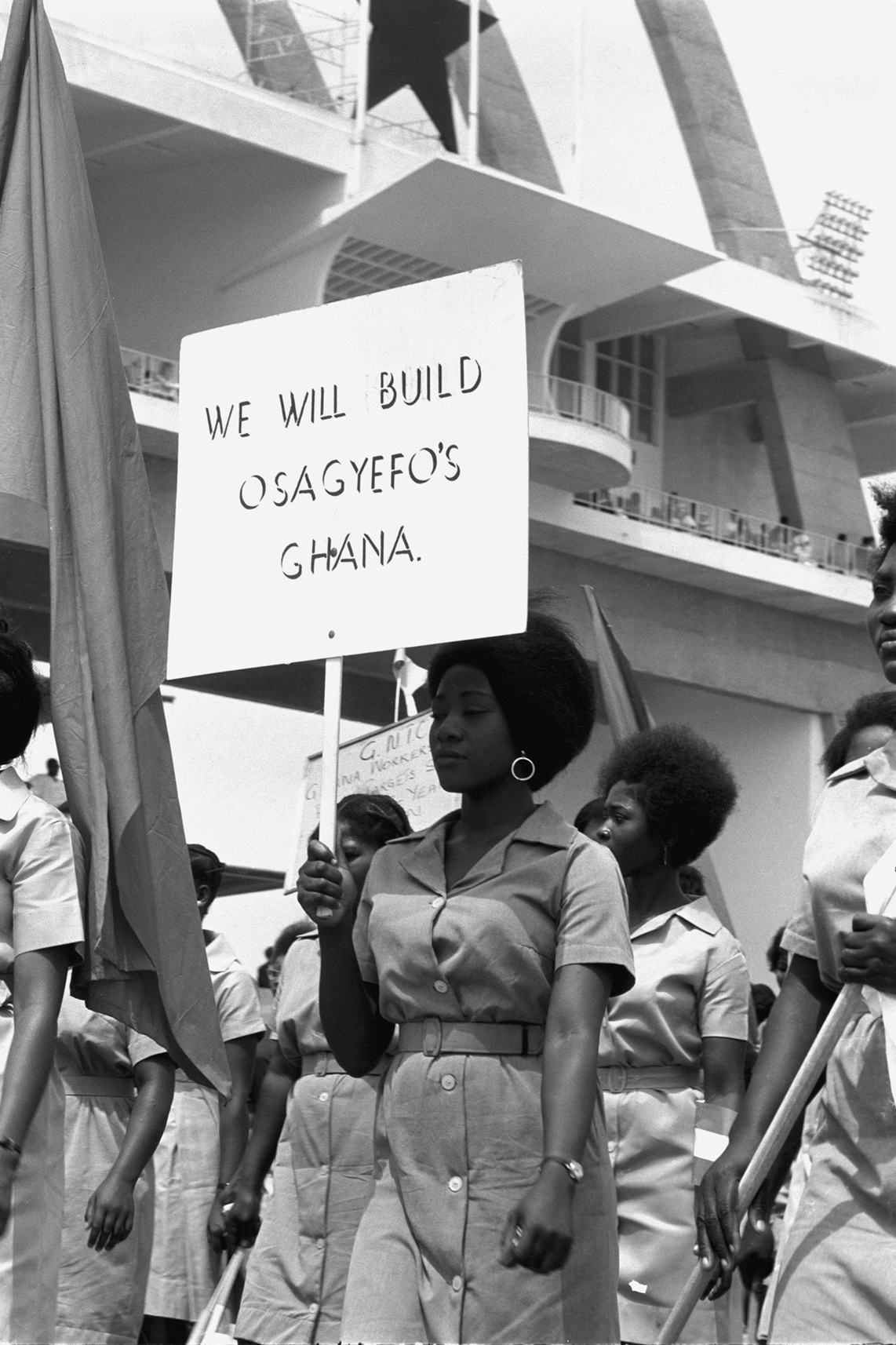
© Mmofra Foundation, Accra, and courtesy Willis Bell Photographic Archive
Although it feeds from the budget allocated to the Institute of African Studies by the University of Ghana, Opoku-Boateng explains that funding is still barely sufficient for the smooth running of the complex equipment and logistics required by the archive. Another challenge is understaffing: besides Opoku-Boateng and two senior research assistants, one of whom is part time, the archive relies on interns. There is also the problem of obsolescence, with much of the information being stored on analog media formats and requiring playback equipment unavailable in Ghana, “leaving the value of these materials totally locked up.”
Photographs are no longer exclusive to high Ghanaian society. I remember how hard it was to get one’s photograph taken while growing up in 1990s Cape Coast, Ghana’s former capital. My boarding-school mates and I would pool together pocket money, and one of us would make a beeline to the nearby photo studio to book an appointment for the following weekend, when we would pose in our best school uniforms. Then we would wait—for as long as a month—for our pictures to be developed and printed. Unlike for today’s middle-class Ghanaians, who grow up capturing their entire lives on mobile phones to share on social media, there are reasons why many in my generation lack the millennial impulse to document the mundane.
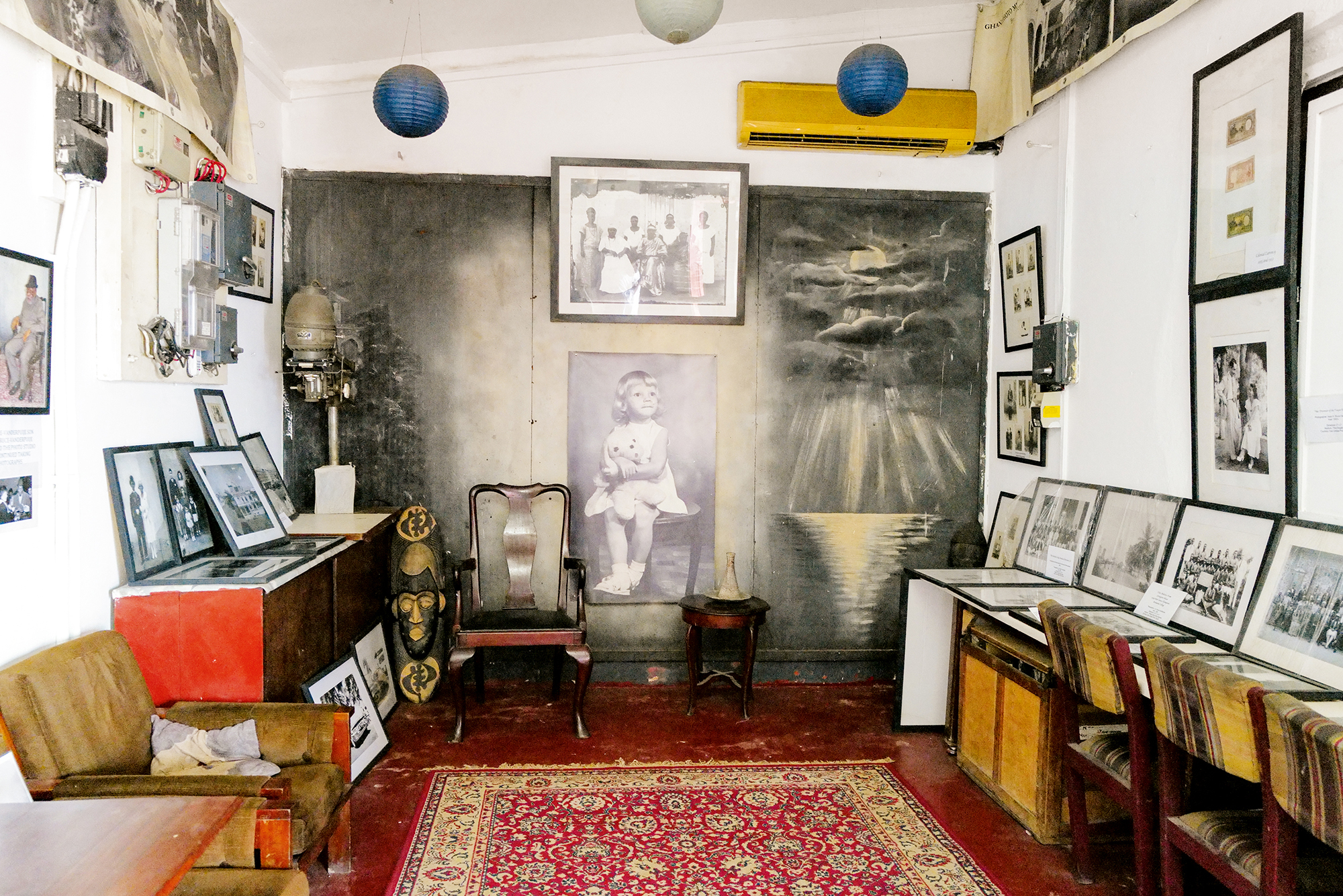
Deo Gratias studio, Accra, 2023
Photograph by Francis Kokoroko for Aperture
Tamakloe expresses skepticism for online platforms such as Instagram and the dominance of digital. “We have lost all the technicalities of a beautiful photograph, even knowledge of the long process of using chemicals in the darkroom,” she says. “Today, it’s plug and play. Once the photo is not blurry, it’s considered ‘a good shot.’” Nevertheless, some do attempt to harness the power of these platforms for the greater good. One such entity is Si Hene—a reference in Akan to the enstoolment of royalty—which was founded in 2020 as a website and Instagram account by Rita Mawuena Benissan, a Ghanaian American interdisciplinary artist who describes Si Hene as “an archive-based collection of images of Ghanaian chieftaincy.” Such work is important in the context of a continent whose royals were reduced from kings and queens to “chiefs” by colonizers whose worldview stopped them from seeing Africans as equals.
When I visited Benissan at Gallery 1957, a contemporary art space and commercial gallery housed in Accra’s Kempinski Hotel, she was preparing for an exhibition at the gallery on the elaborately designed umbrellas that provide more than mere cover from sun and rain to Ghanaian chiefs during royal durbars and festivals. (In Ghana, such umbrellas, as much symbols of royalty as any crown or scepter, are used during sacred traditional ceremonies and festivals.) Benissan tells me that she sees her exhibition and online archiving as extensions of the same work. “People say ‘chieftaincy is dead,’ but it’s not. Literally everything we do is derived from chieftaincy: from our stools to our names to the kente we wear to how we style our hair and present ourselves. It all comes from the chieftaincy. The photos are a way to bridge that heritage.”
Photography has changed from focusing on members of high society to becoming a people’s visual history.
She has been inspired by others including Amy Sall, founder of SUNU Journal—an independent, Pan-African, postdisciplinary multimedia platform that publishes works dealing with Africa and its diaspora—as well as by Nana Oforiatta Ayim, a Ghanaian art historian, and Deborah Willis, the African American historian of photography who once invited Benissan to a “life-changing” conference on Black portraiture at New York University. Benissan was struggling to find images of royal umbrellas for her US graduate-school research. Out of this frustration Si Hene was born. “Even though I had a lot of books,” Benissan explains, “there were no old images, only pictures of recent chiefs, or images from Benin and Nigeria but not Ghana.” Wanting to find out more about how these umbrellas were designed in the early 1800s and 1900s, she scoured archives at museums, institutions, and universities; family albums; and YouTube and internet resources, including Tumblr, to find the answer. It was hard work. “Sometimes, I could spend five hours looking for a photo and not find anything. But then you change a keyword, an image pops up, and you spend six more hours from that one connection,” Benissan tells me.

© the artist and courtesy Saman Archive
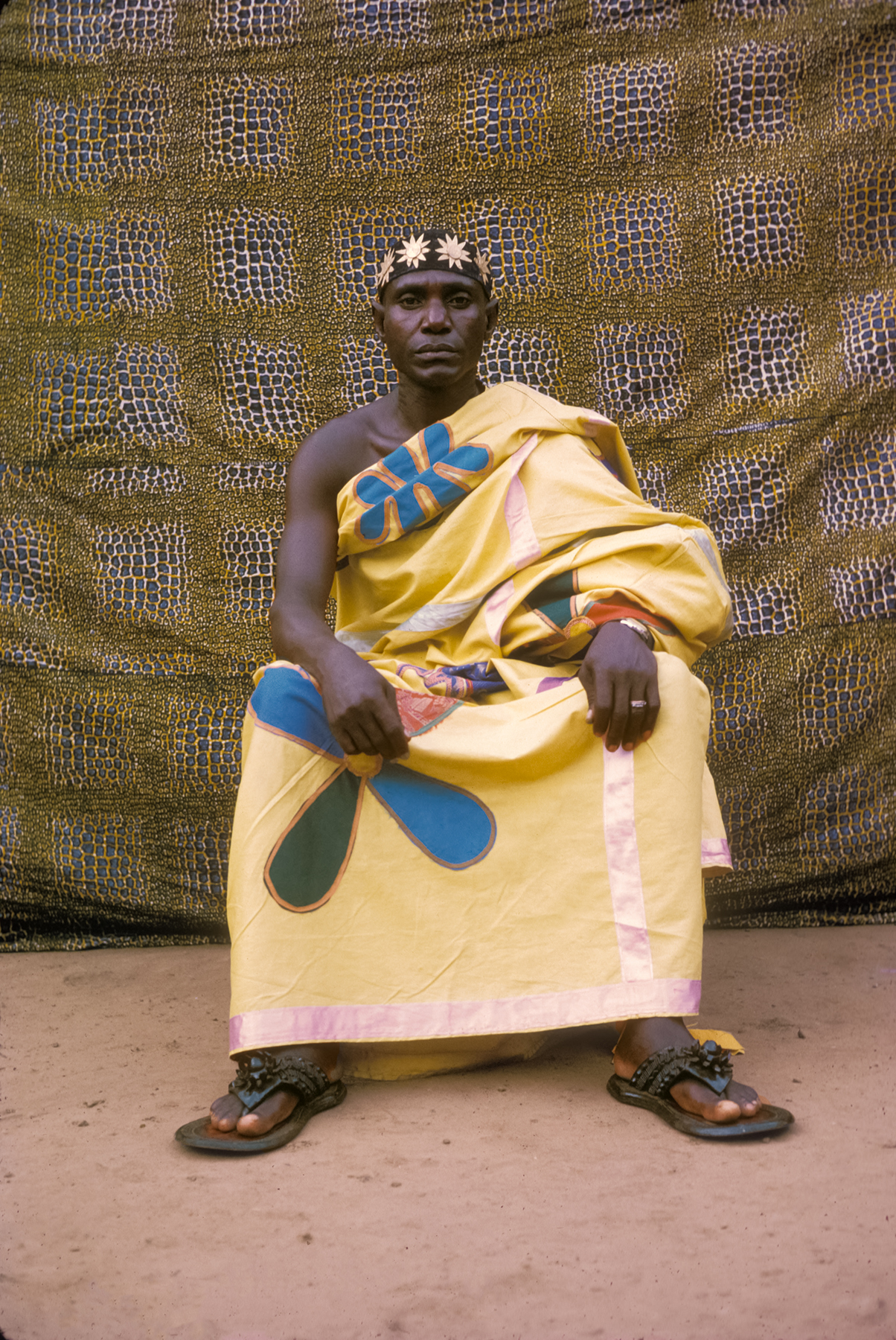
Courtesy D. Michael Warren Papers, University of Iowa Libraries Special Collections and Archives, and Si Hene
After the COVID lockdowns lifted, Benissan returned to Ghana and gained access to chieftaincy meetings, where she was guided toward reference materials and archival collections that included pictures, postcards, stamps, and stills. She is seeing a slow rise of chiefs building their own museums, but she wonders whether these are aimed at Ghanaians or visitors from Africa’s diaspora trying to better understand the ancient nations and cultures out of which their ancestors were stolen. It is an important question: Africans in the diaspora have access to museums, universities, and other institutions their cousins in Africa lack. In Ghana, Benissan explains, you have to ask “a hundred people” for that kind of information, you have to wait and seek approval. Accessibility afforded by social media is key, but Benissan also notes that many parents, grandparents, and chiefs are not on Instagram. She describes being introduced to chiefs who appreciate her idea but ask an important question: “How do I see it?” She also faces copyright issues, as Si Hene does not own any of these images. She nevertheless tries to contact as many institutions, curators, and families as she can. Even if some do not respond, others, Benissan says, “seem happy we are providing another accessible way to see their collections.”
Similar in digital form to Si Hene stands Saman Archive, named after an Akan word that simultaneously means “ghost” and “photographic negative.” Founded in 2015 by the artist and writer Adjoa Armah, Saman began as a repository for the thirty thousand negatives dating from 1963 to 2010 that Armah collected from studios and photographers across Ghana as part of her practice-led doctoral research at the University of Oxford. She considers Saman to be more than just a collection of negatives, stating that the project is a place for “my own photographs and those of my collaborators across the country, recorded conversations with photographers, ephemera, and the research conducted as negatives are being collected.”

Images courtesy Bokoor African Popular Music Archives Foundation (BAPMAF) and J. H. Kwabena Nketia Archives
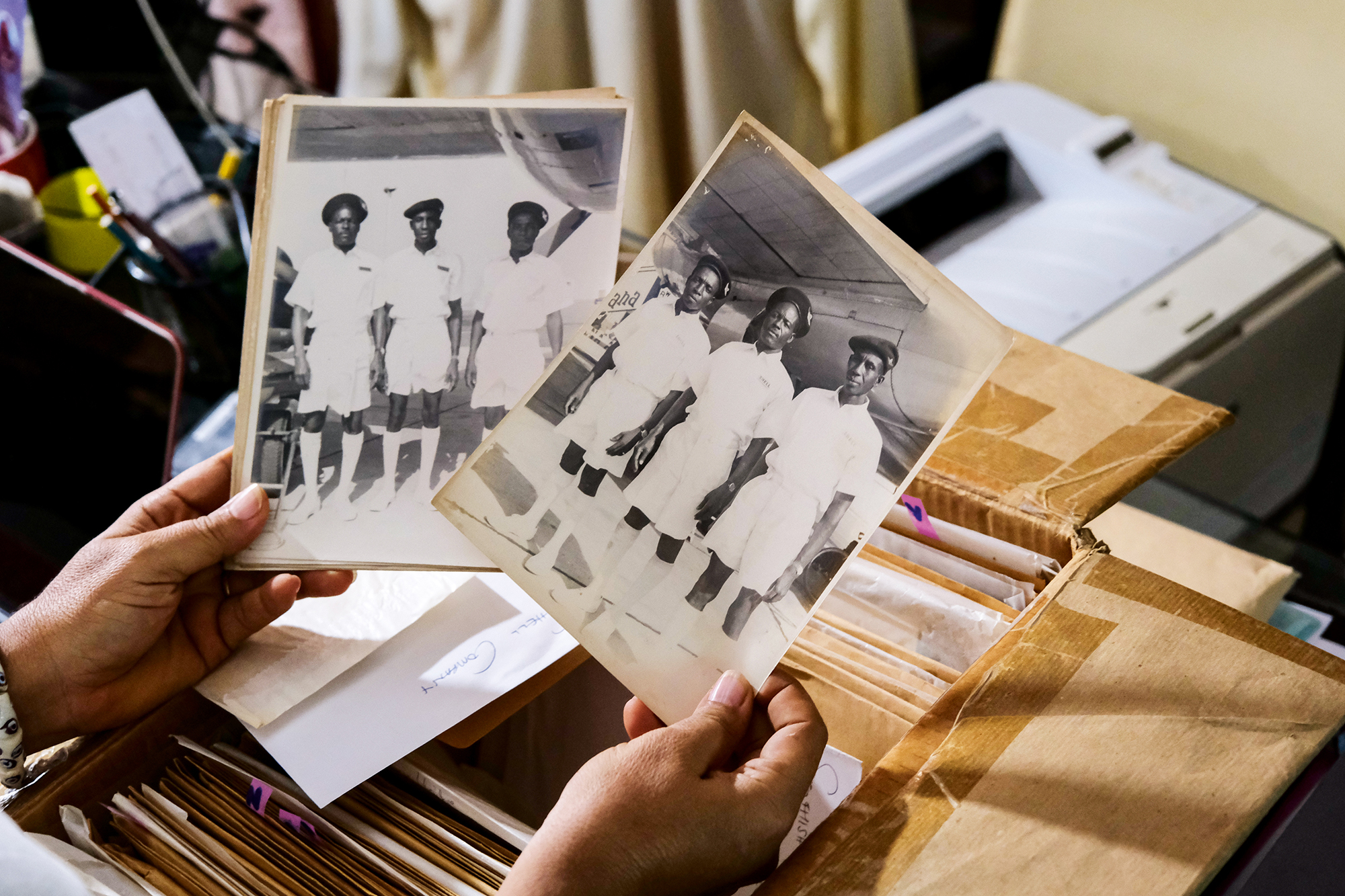
Photograph by Francis Kokoroko for Aperture
Saman stands on the shoulders of giants. As Armah explains, “We never start from zero. The best we can do is honor those who came before us.” She values Deo Gratias and holds particular appreciation for the Nketia Archives’ custodianship of Ghanaian sonic histories, saying, “It’s their work and the work that families do, in which the stories around photographs are central, that really influence me.” In contrast to Si Hene, Saman’s areas of collecting go beyond chieftaincy, and its public face is a website. Noting the way photography has changed from focusing on members of high society to becoming a people’s visual history, Saman is, she says, “interested in what lives looked like beyond the grand narratives that cater toward middle-to-upper-class people.”
Armah surprises me with a “two-hundred-year plan” that includes eventually housing Saman in a physical space. Benissan also dreams of museum and research institutions, where physical images can be better preserved, in all sixteen regions of Ghana. She points out that chieftaincy palaces are ultimately homes and, as such, cannot offer visitors the same levels of exposure as museums. The goal is to balance access to the physical images housed in these spaces with respect for royal privacy. While Deo Gratias already serves as a physical museum, it, too, encounters problems of scaling up, a process that involves, as Tamakloe explains to me, “maintaining the glass plates, digitizing them totally, and making it available virtually to the world to tell the Ghanaian story.” Ghana’s archives are invaluable resources for understanding the nation’s past. Ongoing efforts to preserve and digitize such records—both physical objects and data—are essential for future generations. This work is shaping a collective understanding of history and identity that may otherwise be lost in the maelstrom of modern culture: a thing that is never static.
This article originally appeared in Aperture, issue 252, “Accra.”






